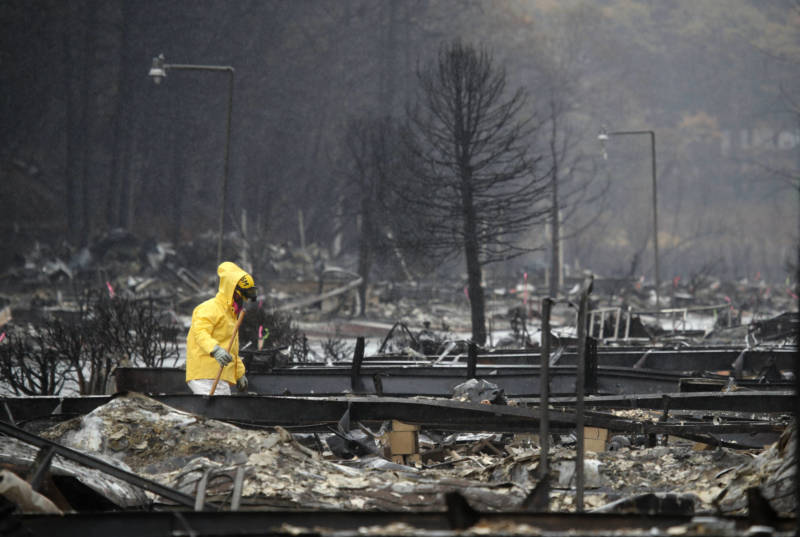The first step of the cleanup effort for the Camp Fire, the deadliest wildfire in modern state history, will start on Monday with removal of hazardous wastes.
The U.S. Environmental Protection Agency (EPA) is leading the interagency effort with assistance from the California Department of Toxic Substances Control (DTSC).
The fire that ripped through Paradise left behind toxic household substances like paint, batteries, cleaners and pesticides. It’s the sort of thing that EPA Incident Commander Steve Calanog said needs to be removed in advance of the CalRecycle team’s arrival, which will begin to remove larger, nonhazardous debris early next year.
“We need to do this in advance for the safety of debris contractors and homeowners,” Calanog said. The team will be looking for things like batteries, which have lead, and asbestos from collapsed buildings.
Calanog said the EPA is working closely with the town of Paradise and Butte County and it’s estimated the first phase will cost tens of millions of dollars.

